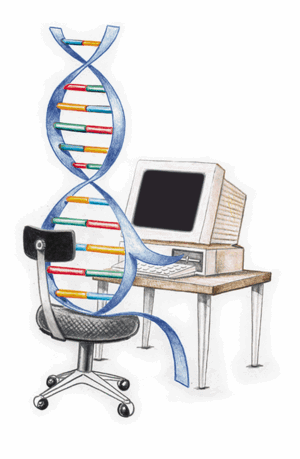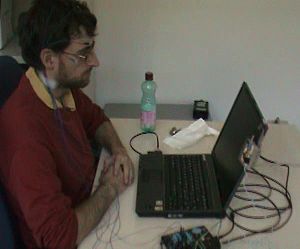Difference between revisions of "BioSignal Analysis"
m |
m |
||
| Line 1: | Line 1: | ||
[[Category:Research Area]] | [[Category:Research Area]] | ||
| − | We develop systems to analyze biological signals to understand high-level features of people producing them. | + | We develop systems to analyze biological signals to understand high-level features of people producing them. This area shares projects with the [[Affective Computing]] area. |
==Ongoing Projects== | ==Ongoing Projects== | ||
Revision as of 15:08, 2 April 2010
We develop systems to analyze biological signals to understand high-level features of people producing them. This area shares projects with the Affective Computing area.
Contents
Ongoing Projects
Affective Computing And BioSignals
Brain-Computer Interface
People
Project Proposals
| Wiki Page: Aperiodic visual stimulation in a VEP-based BCI Title: Aperiodic visual stimulation in a VEP-based BCI
Tutor: MatteoMatteucci |
| Wiki Page: Creation of new EEG training by introduction of noise Title: Creation of new EEG training by introduction of noise
Tutor: MatteoMatteucci |
| Wiki Page: Driving an autonomous wheelchair with a P300-based BCI Title: Driving an autonomous wheelchair with a P300-based BCI |
| Wiki Page: Exploratory data analysis by genetic feature extraction Title: Exploratory data analysis by genetic feature extraction
Tutor: MatteoMatteucci |
| Wiki Page: Multimodal GUI for driving an autonomous wheelchair Title: Multimodal GUI for driving an autonomous wheelchair
Tutor: MatteoMatteucci, SimoneCeriani, DavideMigliore |
| Wiki Page: P300 BCI Title: P300 BCI for ALS patient |
| Wiki Page: Real-time removal of ocular artifact from EEG Title: Real-time removal of ocular artifact from EEG
Tutor: MatteoMatteucci |
Past Projects
- Affective Robotic Rehabilitation of Upper Limbs
- Characterization of the NIA signal
- HeadsetControlForWheelChair
- Stimulus tagging using aperiodic visual stimulation in a VEP-based BCI
- Wireless Affective Devices
Useful Resources
- AirBAT is a repository containing software developed in projects related to this area. See instructions here.



